Is It Worth Hiking From Fira to Oia?
- Li Stalder
- May 14, 2017
- 3 min read
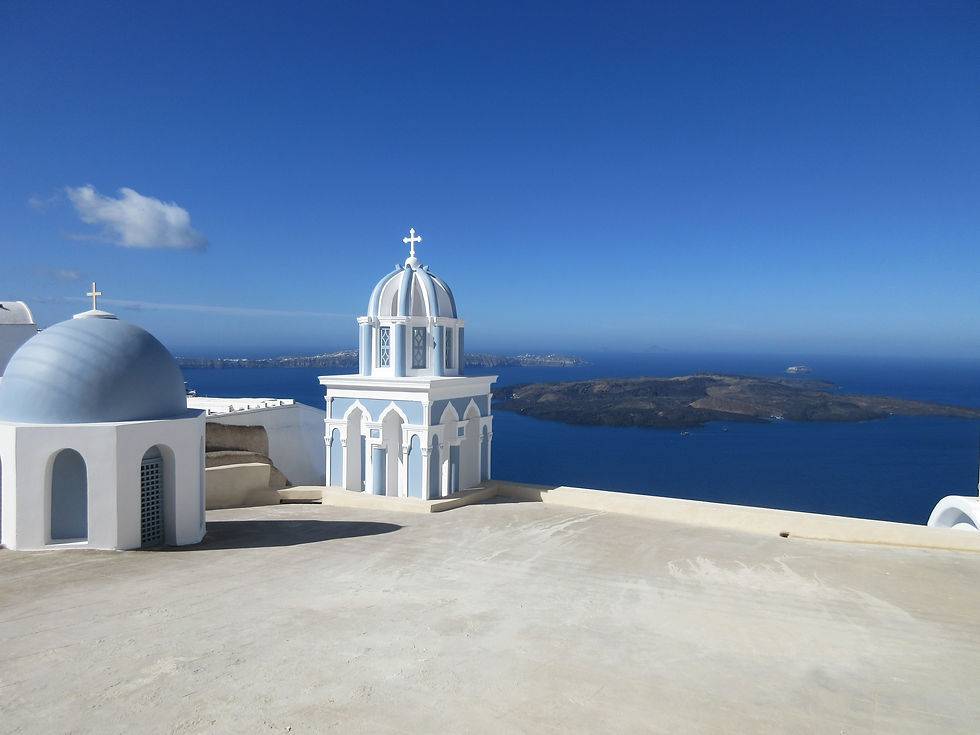
This church bell tower in Firostefani is just one of the many churches you pass by during the hike.
Why take a crowded bus into Oia when you can walk instead? Well, perhaps it's not as simple as that—you need endurance to complete a 10-kilometer, or roughly 6.2 mile, hike. It takes about 3-4 hours depending on how often you stop (for pictures or rest). But don't let the distance scare you. For the average person, it may be considered a moderate to challenging hike. It isn't recommended for smaller children. The views are well worth it, and you get a sense of accomplishment when you're able to look back at where you started once you're in Oia.
The Path
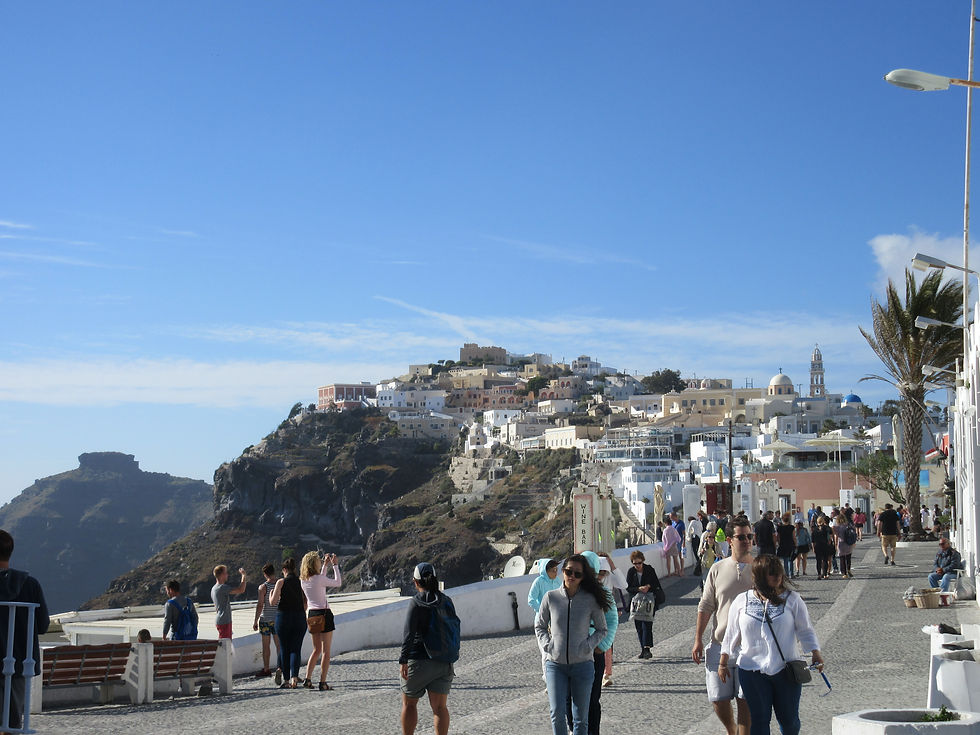
Most people hike from Fira to Oia. While there's no "official" starting point in Fira, a good point of reference to begin is the walkway starting by Hotel Atlantis. By starting your journey there, you will then walk through the town. Look for signs or directions to the cable car, where the path continues on to the next village, Firostefani. Going through town is the most confusing part, so as a general rule of thumb, stay higher rather than going down and stick left to hug the coastline. Sometimes you'll have to go with your instinct, but if you get lost, it's fairly simple to get back on track.
The hike begins in Fira.

As you head out of Fira and Firostefani and move forward to the next village Imerovigli, the path is still mostly cobblestone. On your left you'll see stunning caldera views, while on your right hotels and villas are lined up.
The cobblestone pathway out of Fira leads to Imerovigli.

Once you're out of Imerovigli, the path starts to descend for a while. It's a nice break from gaining elevation through the villages. There's still a few hotels and apartments on the side. At this point, you can not only see the water on your left side, but also on your right.
The paved walkway turns back to cobblestone after Imerovigli.
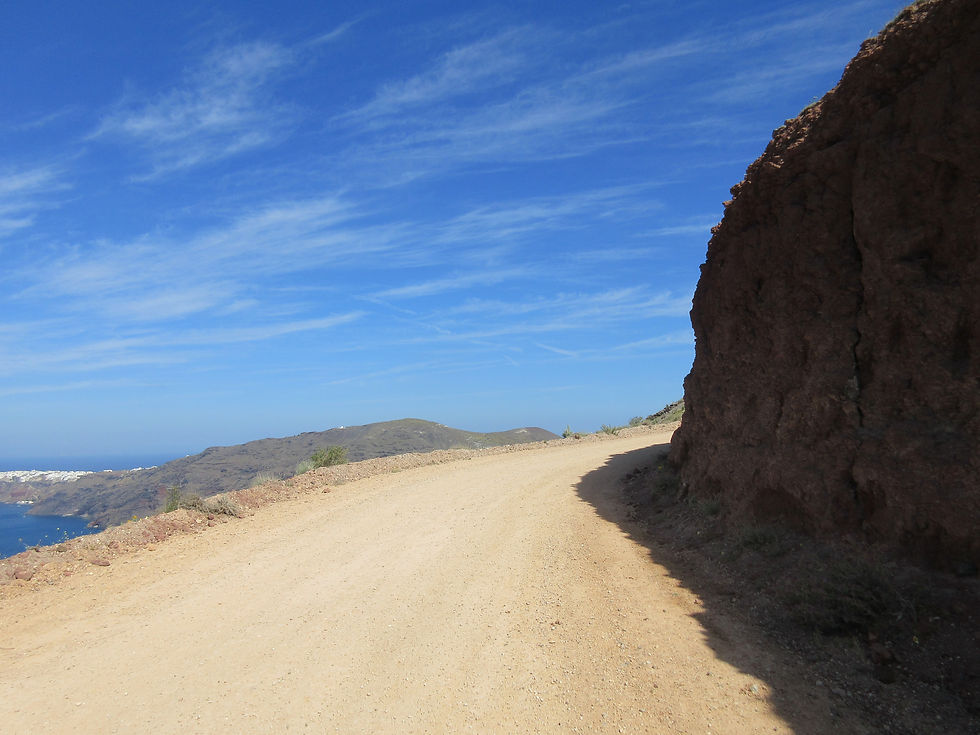
Now that you've left the villages, the walkway is no longer cobblestone or concrete but instead it turns into a dirt path. You start to ascend once again.
The dirt path winds up the mountain.
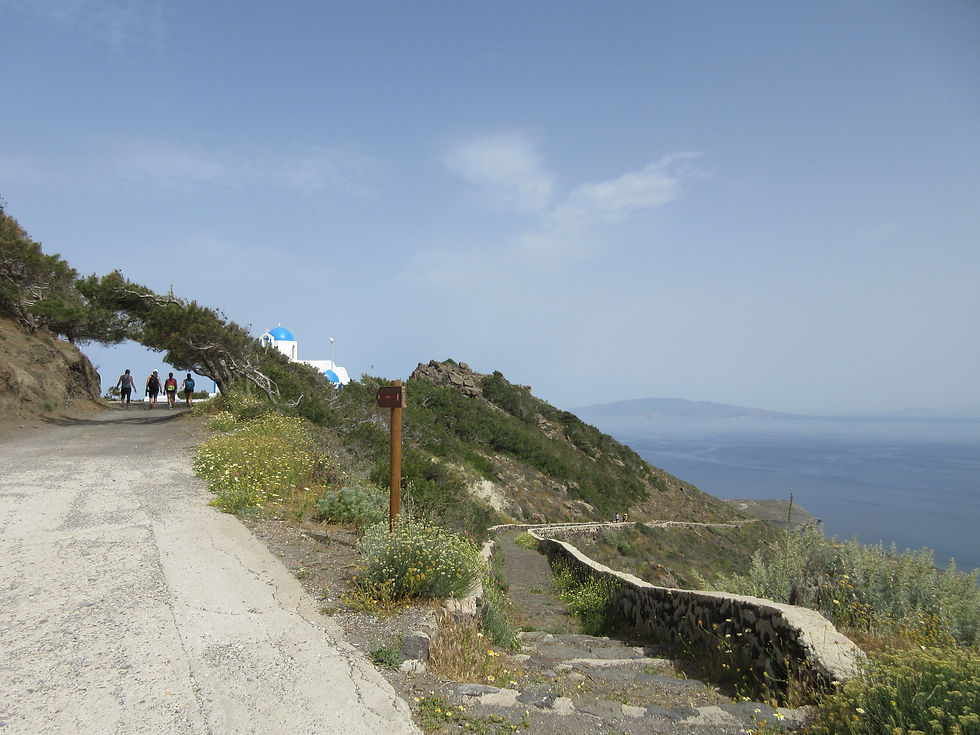
Soon you'll come to a fork in the road. There will be a sign that says go to the left. Follow those directions if you want a more scenic route. Once you pass the church at the top of the hill, the path starts to get narrower and a little less stable under your feet. Be careful descending.
The sign shows hikers the way to Oia for a scenic route.
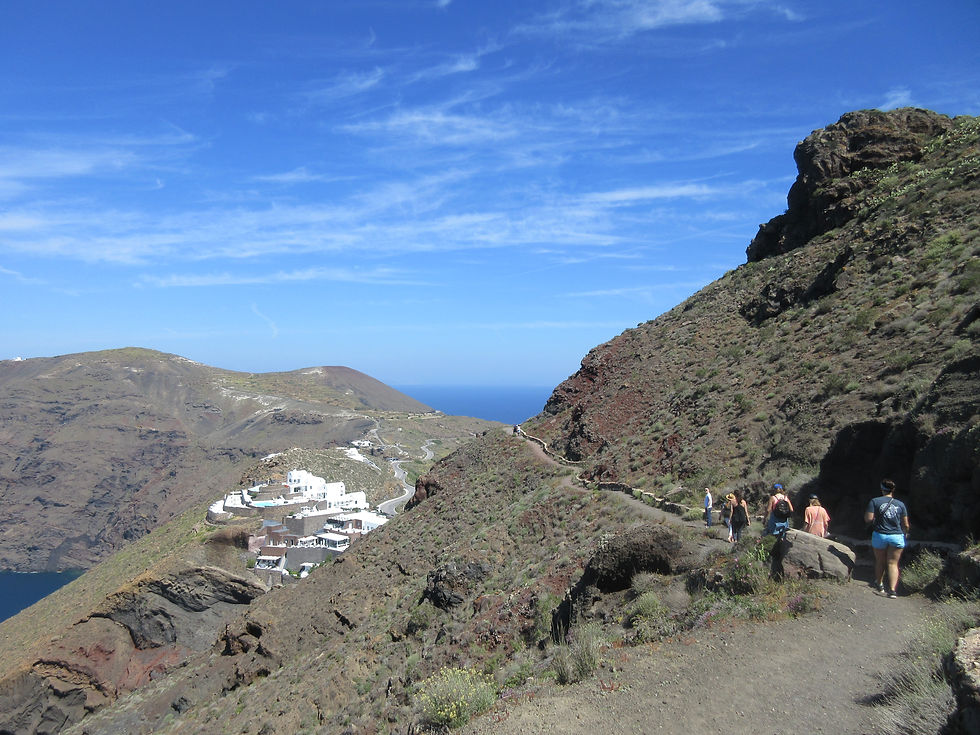
As mentioned just before, the rocky path gets narrower and slippery, so this is where closed-toe shoes with a good grip will come in handy. Once you descend this mountain, you will find yourself next to the main road with no apparent way to go. You'll have to walk on the side of the road for a short distance.
Hikers navigate the slippery narrow pathway.
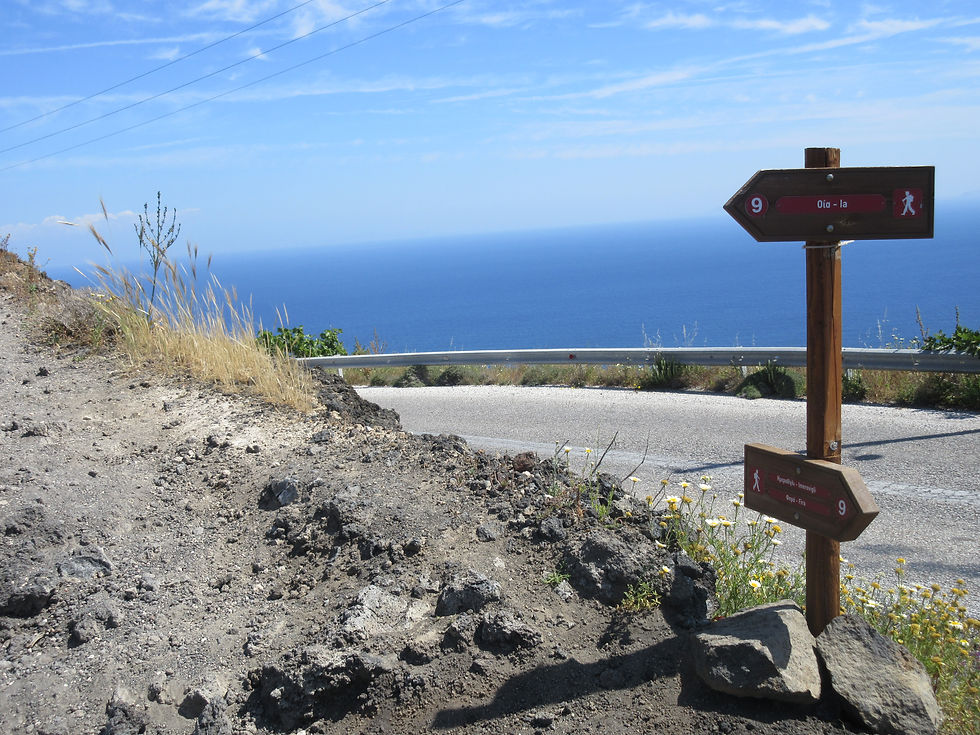
You'll pick up the path again at this sign. Right next to it (not pictured) is a small store where you can get water if you need more.
Follow this sign after you walk in the road.
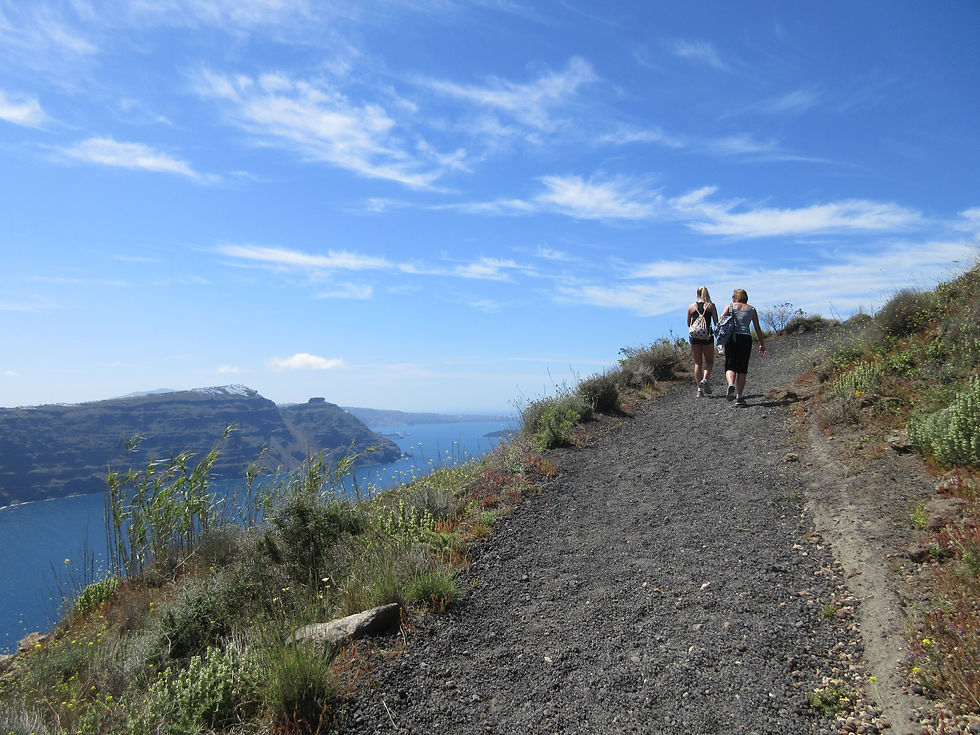
This is the final push before you get to the top. Then you'll be rewarded with a nice view of Oia. It's still about another mile or so away, but the rest of the hike is downhill.
The path ascends for the last time.

A picturesque view of Oia before you start to descend into town.
The majority of people who tackle the hike are tourists. After talking with a few locals, they didn't know much about the history of the hike. One store owner in Fira said she walks to Imerovigli and comes right back. She prefers the cooler weather during the winter season. The best times to hike, especially during summer months, are early in the morning or late afternoon to beat the heat of the day.
According to Greek News Agenda, hiking trails on Greek islands were originally formed by pedestrians and animals to carry goods back and forth between villages. They were the only roads for communication and transportation in times of peace and war.
Tips for the Hike
Comfortable closed-toe shoes are a must. Wear sunscreen. Bring plenty of water. Take a lot of pictures, but also be in the present and step back every once in a while to soak it all in. For additional specific details about the path, download this self-guided app.







Comments